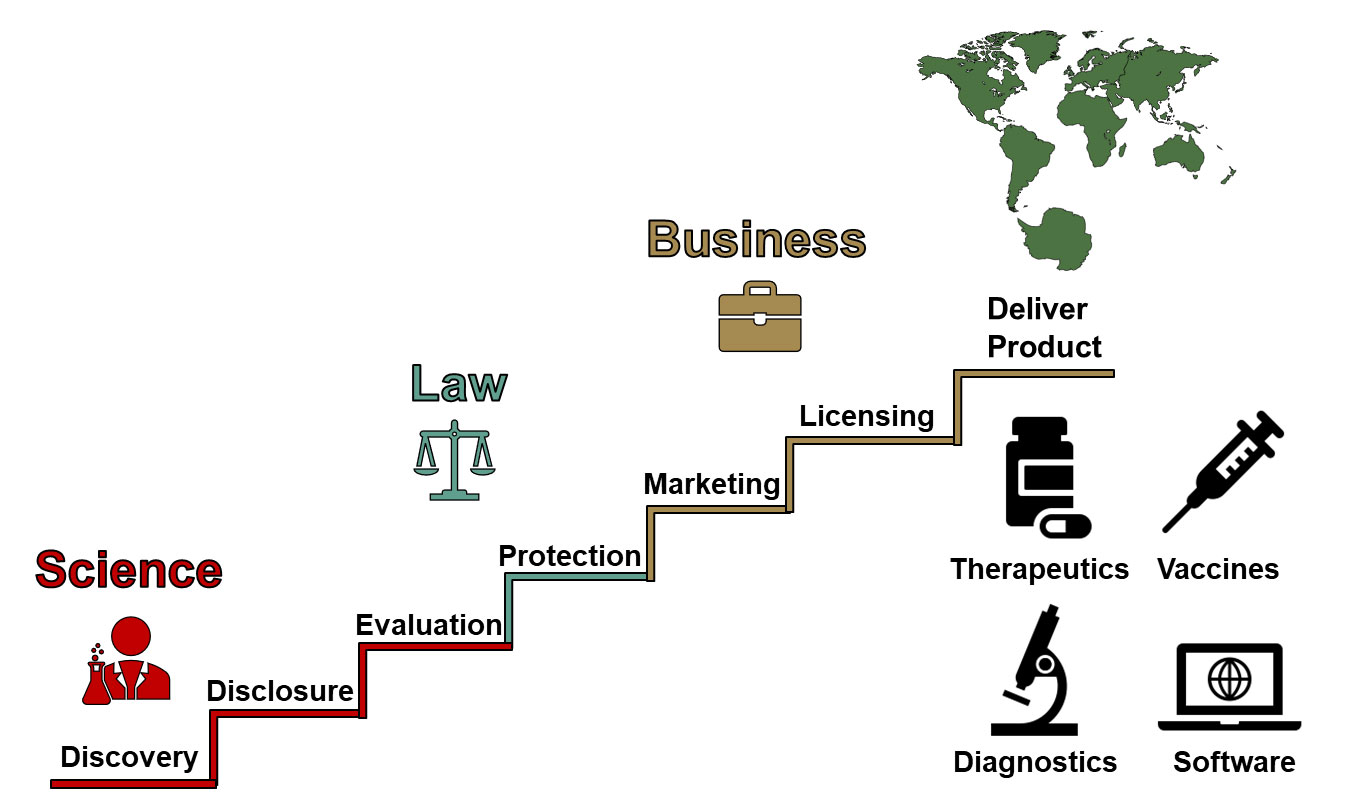Report on the Decentralization of Semiconductor Innovation and its Alignment with Sustainable Development Goals
Executive Summary
The global semiconductor industry is undergoing a strategic transformation from a centralized production model to a decentralized network of regional innovation hubs. This shift is driven by geopolitical, economic, and technological factors, with profound implications for sustainable development. This report analyzes these trends through the lens of the United Nations Sustainable Development Goals (SDGs), highlighting how the restructuring of the semiconductor value chain contributes to building resilient infrastructure (SDG 9), fostering inclusive economic growth (SDG 8), promoting responsible production (SDG 12), and strengthening global partnerships (SDG 17).
SDG 9: Fostering Resilient Infrastructure, Industrialization, and Innovation
The decentralization of semiconductor manufacturing is a direct response to the need for more resilient and reliable technological infrastructure, a core target of SDG 9. The move away from geographically concentrated supply chains mitigates vulnerabilities and enhances global stability.
Governmental Policies and Strategic Investments
Governments worldwide are implementing policies to bolster domestic industrial capacity and innovation ecosystems. These initiatives are critical for building the resilient infrastructure required for future technological advancement.
- United States: The CHIPS and Science Act (2022) allocates significant funding to stimulate domestic semiconductor manufacturing and research.
- European Union: The EU Chips Act (2023) aims to double the EU’s share of the global chip market and reduce external dependencies.
- China: National strategies like “Made in China 2025” and dedicated chip funds prioritize technological self-sufficiency.
- India: A substantial incentive program is in place to attract semiconductor manufacturing and establish a new regional hub.
Technological Diversification for Sustainable Industrialization
Innovation is extending beyond traditional silicon to new materials and architectures that support sustainable industrial applications and enhance performance efficiency.
- Advanced Materials: Gallium Nitride (GaN) and Silicon Carbide (SiC) are being adopted for high-power applications essential for 5G infrastructure and electric vehicles, contributing to greener industrial processes.
- Innovative Architectures: Technologies such as 3D chip integration, Gate-All-Around (GAA) transistors, and chiplet designs are increasing computing density and performance while optimizing energy use.
- Emerging Technologies: Photonic Integrated Circuits (PICs) and Neuromorphic Chips are being developed to meet the demands of high-efficiency computing for Artificial Intelligence (AI), a key enabler of industrial automation and innovation.
SDG 8: Promoting Economic Growth and Decent Work
The establishment of new semiconductor fabrication plants (fabs) and R&D centers worldwide directly contributes to SDG 8 by creating skilled jobs, stimulating local economies, and fostering inclusive growth.
Creation of Regional Employment Hubs
Major investments are leading to the development of new industrial centers, which generate significant employment opportunities and require the development of a skilled workforce.
- United States: Investments by companies like TSMC in Arizona and Samsung in Texas are creating thousands of high-tech manufacturing and engineering jobs.
- European Union: Collaborative projects in regions like Dresden, Germany, involving companies such as Bosch and Infineon, are strengthening the regional economic base.
- Japan and Southeast Asia: Japan is reinforcing its position in specialized semiconductors, while nations like Malaysia and Singapore are expanding their roles in advanced packaging, creating diverse employment opportunities across the value chain.
Challenges in Workforce Development
A key challenge to realizing the full potential of SDG 8 is the global shortage of skilled talent in engineering and manufacturing. Addressing this requires concerted efforts in education and vocational training to build a capable workforce for the future.
SDG 12 & 11: Advancing Responsible Production and Sustainable Communities
The evolution of the semiconductor industry presents opportunities to advance responsible production patterns and support the development of sustainable cities and communities.
Energy-Efficient Chip Design for Responsible Consumption
The trend towards custom, application-specific silicon is driven by the need for greater performance and power efficiency, directly supporting SDG 12.
- Custom AI Accelerators: Hyperscalers and technology firms are designing specialized chips for AI workloads that optimize energy consumption compared to general-purpose processors.
- Efficient Materials: The use of GaN and SiC in power electronics for electric vehicles and fast chargers contributes to more sustainable energy use and transportation systems.
- Open-Source Architectures: The rise of open-source instruction set architectures like RISC-V enables the development of highly optimized, low-power processors for IoT devices, which are foundational for smart city infrastructure (SDG 11).
SDG 16 & 17: Enhancing Global Stability and Strategic Partnerships
The decentralization effort, while driven by national interests, necessitates unprecedented levels of collaboration, aligning with the principles of building strong institutions and fostering partnerships for the goals.
Building Resilient Supply Chains for Global Stability
By diversifying the locations of critical manufacturing, the global community reduces the risk of supply chain disruptions that can lead to economic and political instability, contributing to the aims of SDG 16.
Fostering Partnerships for Innovation
Achieving the industry’s ambitious goals requires collaboration across sectors and borders, embodying the spirit of SDG 17.
- Public-Private Partnerships: Government incentive programs are fostering collaboration between public institutions and private companies like Intel, TSMC, and Samsung to build new infrastructure.
- Cross-Border Collaboration: TSMC’s expansion into the U.S. and Japan, and European partnerships in Dresden, demonstrate how global leaders are working with national governments to achieve shared industrial goals.
- Ecosystem Development: The growth of open-source hardware initiatives encourages collaboration between corporations, startups, and academic institutions, accelerating innovation in a more inclusive manner.
Future Outlook: Challenges and Opportunities for Sustainable Technological Advancement
The road ahead involves navigating the complexities of a fragmented global landscape while harnessing technology for sustainable development. The industry must balance the drive for regional self-sufficiency with the need for global collaboration to continue advancing innovation. Key areas to monitor include the maturation of the RISC-V ecosystem, progress in developing a skilled global workforce, and the establishment of international standards for security and interoperability in a decentralized technological world. The successful integration of these efforts will be paramount to ensuring that the new era of silicon innovation contributes positively to the Sustainable Development Goals.
Analysis of Sustainable Development Goals in the Article
1. Which SDGs are addressed or connected to the issues highlighted in the article?
The article on the decentralization of the semiconductor industry connects to several Sustainable Development Goals (SDGs) by highlighting themes of economic growth, industrial innovation, resilient infrastructure, and global partnerships. The primary SDGs addressed are:
- SDG 8: Decent Work and Economic Growth: The article discusses national “economic development goals” and massive investments aimed at boosting domestic production, which are central to creating jobs and fostering economic growth in the high-tech sector.
- SDG 9: Industry, Innovation, and Infrastructure: This is the most prominent SDG in the article. The entire text revolves around building new industrial infrastructure (semiconductor fabs), fostering technological innovation (new materials, chip architectures), and enhancing scientific research and development (R&D) to create a more resilient and diversified global industry.
- SDG 12: Responsible Consumption and Production: The article touches upon this goal through its discussion of supply chain resilience and technological advancements that promote efficiency. The shift towards custom silicon and chiplets aims to “optimize performance, power efficiency,” contributing to more sustainable production patterns.
- SDG 17: Partnerships for the Goals: The article highlights the complex web of international relationships, including competition and collaboration. It explicitly mentions the need for “strategic collaborations between governments, universities, startups, and even competitors” and points to specific public-private partnerships funded by government initiatives.
2. What specific targets under those SDGs can be identified based on the article’s content?
Based on the article’s content, several specific SDG targets can be identified:
-
Under SDG 8 (Decent Work and Economic Growth):
- Target 8.2: Achieve higher levels of economic productivity through diversification, technological upgrading and innovation. The article’s core theme is the diversification of the semiconductor landscape away from a “highly centralized model” and the “acceleration of application-specific innovation” in areas like AI, using new materials (GaN, SiC) and architectures (chiplets, 3D stacking).
-
Under SDG 9 (Industry, Innovation, and Infrastructure):
- Target 9.2: Promote inclusive and sustainable industrialization. The article details how nations are pouring “billions into domestic chip production” through policies like the U.S. CHIPS Act and EU Chips Act to increase their domestic industrial capacity.
- Target 9.4: Upgrade infrastructure and retrofit industries to make them sustainable, with increased resource-use efficiency. The development of “Gallium Nitride (GaN) and Silicon Carbide (SiC) for high-frequency and high-power applications, critical for… electric vehicles” and the goal to “optimize performance, power efficiency” in custom chips align with this target.
- Target 9.5: Enhance scientific research, upgrade the technological capabilities of industrial sectors…and substantially increase…public and private research and development spending. The article is replete with examples, from the “redistribution of R&D and manufacturing capabilities” to massive government funding programs like the “U.S. CHIPS and Science Act ($52 billion)” and the “EU Chips Act (€43 billion)” which are explicitly designed to boost R&D and technological capabilities.
-
Under SDG 12 (Responsible Consumption and Production):
- Target 12.5: Substantially reduce waste generation through prevention, reduction, recycling and reuse. The adoption of “Chiplet architecture” is a direct example of this. By allowing for the integration of smaller, specialized chips, this approach can improve manufacturing yields and reduce the waste associated with producing large, monolithic chips. It also promotes the reuse of proven IP blocks in new designs.
-
Under SDG 17 (Partnerships for the Goals):
- Target 17.17: Encourage and promote effective public, public-private and civil society partnerships. The article describes how the decentralization trend “necessitates strategic collaborations between governments, universities, startups, and even competitors.” It provides a concrete example of a public-private partnership in the European Union, with “Germany’s Bosch and Infineon, and the Netherlands’ NXP, partnering in Dresden.”
3. Are there any indicators mentioned or implied in the article that can be used to measure progress towards the identified targets?
Yes, the article mentions several quantitative and qualitative indicators that can be used to measure progress towards the identified targets:
- Financial Investment in R&D and Infrastructure (Indicator for Target 9.5): The article provides specific figures for government spending aimed at boosting domestic industry and innovation. These include the “U.S. CHIPS and Science Act ($52 billion),” the “EU Chips Act (€43 billion),” and “India’s $10 billion incentive program.” These figures are direct measures of public investment in the sector.
- Market Growth and Valuation (Indicator for Target 8.2): The article cites market projections that serve as indicators of economic productivity and growth in the high-tech sector. These include the industry’s projected valuation of “$1 trillion by 2030” and the forecast of “15% growth in 2025 for the global semiconductor market, reaching $697 billion.”
- Adoption Rate of New Technologies (Indicators for Targets 9.4 and 12.5): The article provides market size projections for innovative technologies that promote efficiency. For example, the chiplet market is “projected to reach $144.9 billion by 2030 in the compute segment alone,” indicating the scale of adoption for this more resource-efficient design methodology. Similarly, the projection that the “RISC-V instruction set architecture (ISA) is projected for substantial growth, potentially securing almost 25% of the global market share by 2030” indicates a shift towards open-source, adaptable technologies.
- Establishment of New Manufacturing Facilities (Indicator for Target 9.2): The article points to specific new infrastructure projects as evidence of industrialization efforts. Examples include “TSMC… announced its $12 billion Arizona fab investment in 2020” and “Samsung’s… $17 billion Texas plant in 2021.” The operational status of these fabs, such as “TSMC’s first Arizona fab is expected to be fully operational” in 2025, serves as a milestone indicator.
- Formation of Public-Private Partnerships (Indicator for Target 17.17): The article provides a qualitative indicator by naming a specific partnership: “Germany’s Bosch and Infineon, and the Netherlands’ NXP, partnering in Dresden.” The number and scale of such collaborations can be tracked to measure progress.
4. Summary Table of SDGs, Targets, and Indicators
| SDGs | Targets | Indicators |
|---|---|---|
| SDG 8: Decent Work and Economic Growth | Target 8.2: Achieve higher levels of economic productivity through diversification, technological upgrading and innovation. | Projected market growth to $1 trillion by 2030 and $697 billion in 2025; development of new materials (GaN, SiC) and architectures (chiplets). |
| SDG 9: Industry, Innovation and Infrastructure | Target 9.2: Promote inclusive and sustainable industrialization. | Establishment of new manufacturing facilities (e.g., TSMC’s $12B Arizona fab, Samsung’s $17B Texas plant). |
| Target 9.4: Upgrade infrastructure and retrofit industries to make them sustainable. | Adoption of power-efficient materials like Gallium Nitride (GaN) and Silicon Carbide (SiC) for applications such as electric vehicles. | |
| Target 9.5: Enhance scientific research and upgrade technological capabilities. | Public and private R&D spending figures (e.g., U.S. CHIPS Act: $52 billion; EU Chips Act: €43 billion). | |
| SDG 12: Responsible Consumption and Production | Target 12.5: Substantially reduce waste generation. | Projected market growth for chiplet technology ($144.9 billion by 2030), which improves manufacturing yields and reduces material waste. |
| SDG 17: Partnerships for the Goals | Target 17.17: Encourage and promote effective public, public-private and civil society partnerships. | Specific examples of partnerships, such as Bosch, Infineon, and NXP collaborating in Dresden, Germany. |
Source: markets.financialcontent.com







